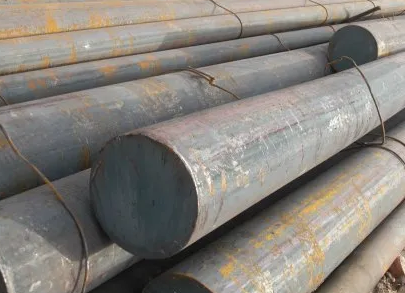-
About
-
Our Brand
-
Products
-
Community
Community
Blog
Blog
Everything You Need to Know About SCM415H Steel
- Writer
- STEELTOPIA
- Date
- 24-06-07

Introduction to SCM415H Steel
SCM415H steel is a versatile alloy steel known for its strength and durability. This steel is widely used in various industries, including automotive and machinery, due to its excellent mechanical properties and ease of fabrication. In this article, we will explore the chemical composition, manufacturing process, applications, and more to give you a comprehensive understanding of SCM415H steel.
Chemical Composition and Properties
SCM415H steel boasts a unique combination of elements that contribute to its remarkable properties. The key components include carbon, manganese, chromium, and molybdenum. These elements enhance the steel's tensile strength, yield strength, and hardness, making it suitable for high-stress applications.
- Chemical Composition:
- Carbon (C): 0.12-0.18%
- Manganese (Mn): 0.60-0.90%
- Chromium (Cr): 0.90-1.20%
- Molybdenum (Mo): 0.15-0.30%
Mechanical Properties:
- Tensile Strength: 930-1080 MPa
- Yield Strength: 785 MPa
- Hardness: 217 HB
Manufacturing and Heat Treatment
The production process of SCM415H involves melting and alloying various elements in a controlled environment. The steel is then subjected to heat treatment processes such as annealing, quenching, and tempering. These treatments enhance its mechanical properties, making it more suitable for demanding applications.
Applications and Uses
SCM415H steel is widely used in the manufacturing of automotive parts, machinery components, and industrial tools. Its high strength and hardness make it ideal for gears, shafts, and other components that undergo significant wear and stress.
Common Applications:
- Automotive gears and shafts
- Industrial machinery parts
- Construction equipment
Advantages and Limitations
SCM415H steel offers numerous advantages, including high tensile strength, excellent wear resistance, and good machinability. However, it also has some limitations, such as moderate corrosion resistance, which can be addressed through proper surface treatments.
Advantages:
- High tensile strength
- Excellent wear resistance
- Good machinability
Limitations:
- Moderate corrosion resistance
- Requires heat treatment for optimal properties
Comparison with Other Alloy Steels
When compared to other alloy steels like SCM415 and SCM440, SCM415H stands out for its balanced combination of strength and ductility. While SCM440 offers higher hardness, SCM415H provides better overall performance in dynamic applications.
Machinability and Workability
SCM415H steel is known for its good machinability, making it easier to cut, shape, and form. Using appropriate tools and techniques, such as carbide-tipped tools and controlled cutting speeds, can ensure optimal results.
Welding and Joining
Welding SCM415H requires specific techniques to maintain its properties. Preheating the material and using low-hydrogen welding electrodes can help prevent cracking and ensure strong weld joints.
Corrosion Resistance and Maintenance
Although SCM415H has moderate corrosion resistance, applying surface treatments like galvanizing or coating can significantly enhance its durability. Regular maintenance and inspection can also help extend the lifespan of SCM415H components.
Case Studies and Practical Examples
Numerous industries have successfully implemented SCM415H steel in their operations. For instance, automotive manufacturers have reported improved performance and longevity in gears and shafts made from SCM415H, thanks to its robust properties.
Future Trends and Developments
The demand for high-performance alloy steels like SCM415H is expected to grow, driven by advancements in technology and industrial applications. Ongoing research aims to further enhance its properties and develop new applications.
Environmental and Sustainability Considerations
Producing SCM415H steel involves certain environmental impacts, but the material's recyclability contributes to sustainability efforts. By recycling and reusing SCM415H, industries can reduce their carbon footprint and promote eco-friendly practices.
Conclusion
SCM415H steel is a highly versatile and durable material suitable for various high-stress applications. Its unique properties, combined with advancements in manufacturing and heat treatment techniques, make it a preferred choice in the automotive, machinery, and construction industries. By understanding its composition, benefits, and uses, you can make informed decisions about utilizing SCM415H in your projects.


 HOME
HOME